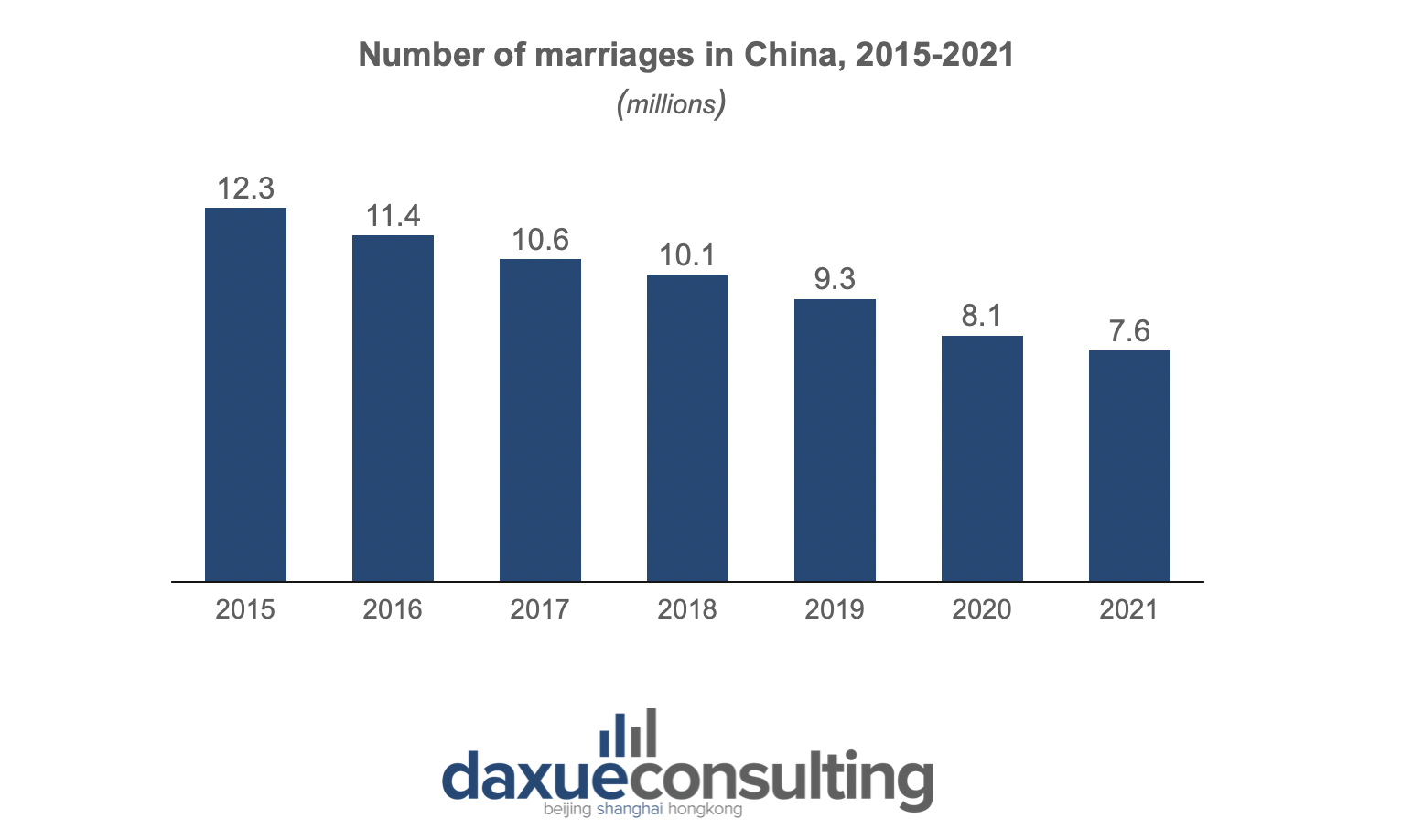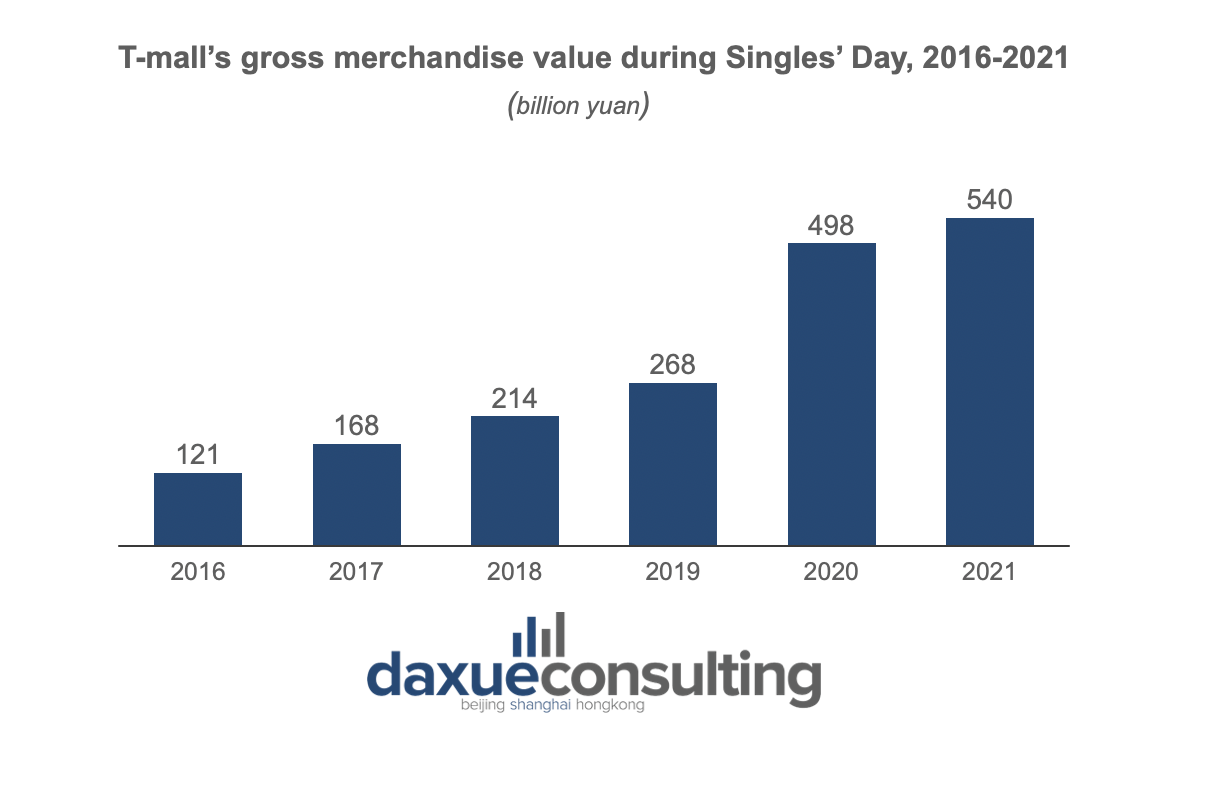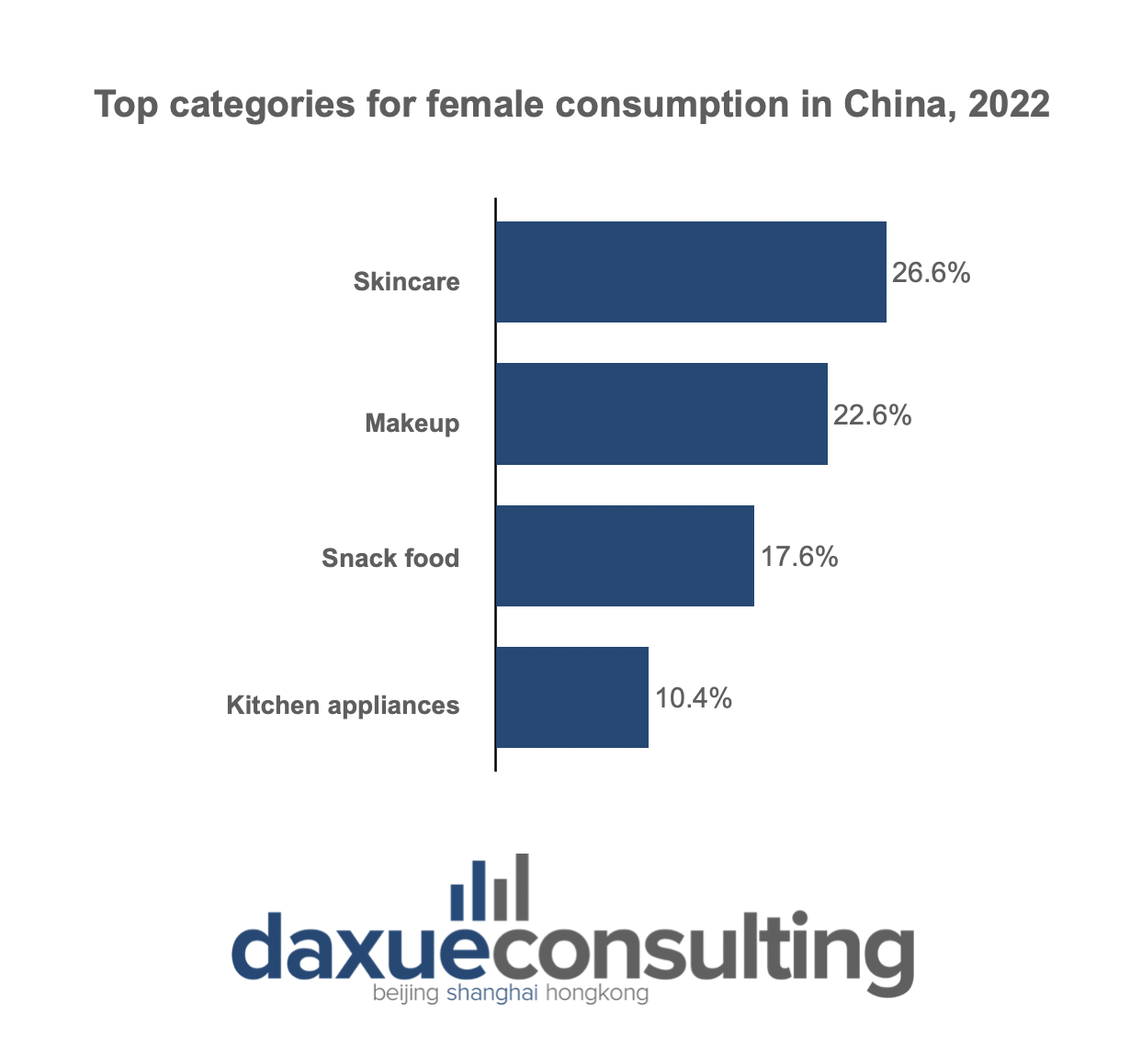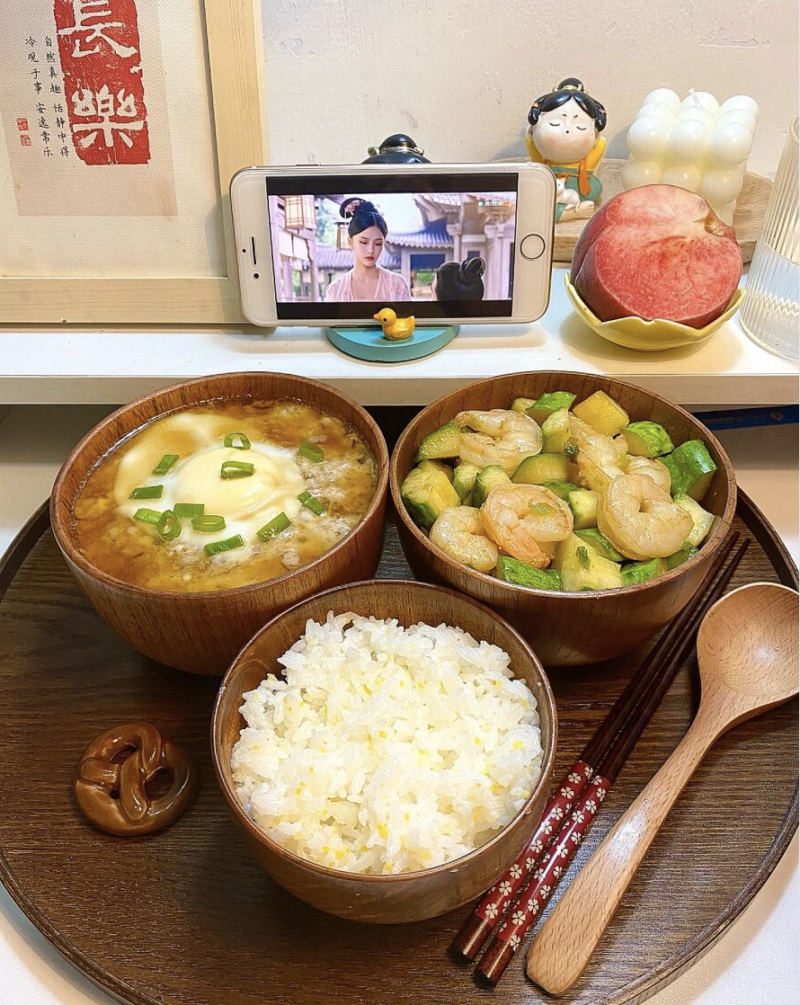Over the past few years, China has experienced significant demographic changes, including a rise in the number of single Chinese women. Despite the government’s wishes, more and more people are choosing to stay single, resulting in a significant decrease in marriage rates from 12.2 million in 2015 to 7.6 million in 2021. According to Guoyuan Securities, the proportion of one-person households across the country has reached 25.4% of total households, representing an increase of 11.4% compared with 2011. This means that roughly one out of every five households consists of a single person. In 2022, about 92 million adults in China were “living alone”.

The shifting interests of women have played a significant role in these demographic changes. More and more “leftover women” are taking pride in their single status, with a growing number of them choosing a single lifestyle over marriage, particularly among millennials. These trends are affecting the Chinese market as well, with the Singles’ Day becoming an increasingly important commercial holiday.
Some women have gone even further in embracing their single status, vowing to never get married. These women find support on social media like WeChat, where they can join groups for single women to share problems and provide emotional support to one another, effectively substituting romantic relationships.
Single women are reshaping the Chinese economy
Following the implementation of the one-child policy, Chinese families placed a strong emphasis on educating their daughters. As a result, Chinese women are now well-educated and successful: almost 53% of the top-scoring students across mainland China’s 31 provincial-level regions are female, and Chinese women have been the dominant gender in colleges for several years.
According to HSBC, women account for a relatively high proportion of China’s workforce, with a labor participation rate of 80% for women aged 25 to 54 in 2018, compared to a global average of 62%. National statistics show that in 2020, females accounted for 52.1% of employees in local committees, and they have also surpassed men in tertiary education enrollment, with: 58% of women now enrolled, compared to 42% of men.
Dr Kaiping Peng, a psychology professor at Tsinghua University, estimates that some 70% of the local employees of international corporations in Shanghai’s Pudong or Beijing’s Central Business District are the so-called Chinese leftover women. A 2021 survey of China’s urban young population carried out by China’s Communist Youth League found that close to half of all young women living in the city don’t plan on getting married.
Commercial festivals and ads celebrate single people
The market is capitalizing on current demographic trends, with Singles’ Day becoming the largest annual shopping festival globally, surpassing Black Friday. The growth of this festival over the past years has been very prominent. For example, Tmall’s gross merchandise value during Singles’ Day grew from 120.7 billion yuan in 2016 to 540.3 yuan in 2021. To provide a better perspective, in 2020, the sales during Singles’ Day amounted to approximately 52 billion USD more than the sales on Black Friday in the US. Specifically, China recorded sales worth 74.1 billion USD on Singles’ Day, while the US had sales of 22.1 billion USD on Black Friday.
Companies are also targeting single women in their campaigns, with a focus on rising female customers. For example, SK-II (a P&G upper-end cosmetics line) made headlines with its feminist advertisement that featured “leftover women” and encouraged them to resist social pressures. The release of the first part of the advertisement helped increase sales by over 50% in a few months.

Luxury products help single women fight social pressure
According to Accenture, China is going through a transition from a “we” to a “me” economy. As people become less focused on family, they tend to purchase more non-essential goods that reflect their personality and status, especially premium products. In fact, 74% of those with a monthly income above 30,000 yuan are willing to invest in such items.
However, social pressure on single women to conform to traditional standards and get married early remains high. When women do not fulfill these expectations, they and their parents may face criticism from relatives. Women try to fight off such pressure and prove their happiness by showing their financial success through flaunting luxury products.
Many women view expensive clothing and accessories as a way to stand up to social pressure from their families and relatives. By carrying a high-end bag or wearing expensive jewelry, they improve their image and demonstrate their success. This success can make it difficult for relatives to criticize their unmarried status. For example, in China, purchasing diamond jewelry for oneself is becoming increasingly popular, accounting for 32% of pieces acquired and more than 28% of value annually.
Women are spending more on beauty and fitness
HSBC reports that more and more women are focusing on fitness and beauty, with more working women going to the gym and cosmetic sales rising by 13% in 2019. In addition, aesthetic medical services (such as anti-wrinkle treatment or plastic surgery) have grown by 24% per year over the past five years with Hong Kong greatly benefiting from medical tourism by female consumers from mainland China.
According to Questmobile’s 2022 report on the “She economy”, online female shoppers have reached 581 million by 2022, and almost half of their online consumption is in the beauty, skincare, and makeup sectors. Other popular categories include kitchen appliances and food and beverages. It’s interesting to notice that snacks have been acquired more than other food categories, which shows shifting interests among female consumers in China.

As more women focus on building their careers, they are interested in spending their extra money on leisure. According to China Mobile, popular ways for women to relieve stress in 2021 included working out (40.8%) and beauty procedures (21.1%). The report found that yoga was the preferred type of sport among women, leading to growth of yoga apps usage or yoga TV show views, especially among women aged 30-39.
Single women value travel and food
Single women have been more interested in experiences customized for one person. For example, China has recently seen the emergence of “one-person meal” restaurants. Many venues have started offering isolated single table dining environments as a way to attract consumers. Other food selling businesses started offering “one-person meal” options, such as half portions of dishes, single food boxes, small portions of rice, single glasses of wine, and mini-hotpots, all designed for one person.

There are currently 184 enterprises in China that contain “one-person meal” in their names, products and services or trademarks. In 2020, 79 new enterprises related to “one person meals” were registered nationwide, with an annual growth rate of 82.29%. As women become less willing to handle traditional household tasks. they are increasingly purchasing more premade food.
The market of household appliances followed this trend, offering smaller-sized cooking devices, as well as those with a wider range of functions. According to Guoyuan Securities, mini-appliances were purposefully designed for single-person usage.
Moreover, travel has also been growing among women. A Questmobile report on female consumption indicates that in 2021, women’s spending on travel was 33% higher than men’s: female travelers spend more, buy more, and save more. Most importantly, there was also a 50% increase in solo outdoor women.
How single women affect the housing market in China
Single women have also affected the housing market in China. Analyses of gentrified areas in Hong Kong revealed that in neighborhoods undergoing physical upgrades, apartments were becoming owner-occupied homes instead of rentals. There, single women increased by 53.2% between 1986 and 2006, compared to a rise of just 15.2% among single men. Additionally, the number of divorced and separated women in these neighborhoods rose at twice the pace of divorced and separated men.
According to HSBC, women in mainland China were responsible for three-quarters of household purchasing decisions in 2020, and their annual spending was expected to leap from 3.3 trillion yuan in 2017 to 8.6 trillion yuan by 2022.
The economy of single Chinese women
- China has experienced a significant rise in the number of single women, resulting in a decrease in marriage rates.
- More women are choosing a single lifestyle over marriage, with a growing number of them taking pride in their single status.
- Single women in China are well-educated and successful, accounting for a high proportion of the country’s workforce.
- The market is capitalizing on current demographic trends, with Singles’ Day becoming the largest annual shopping festival globally.
- Single women in China are spending more on luxury products, beauty and fitness, and are a growing consumer segment in the country.
Author: Sofia Tishchenko





